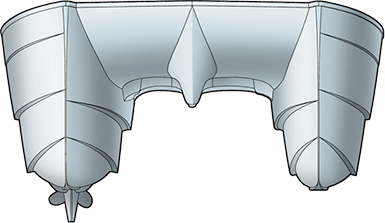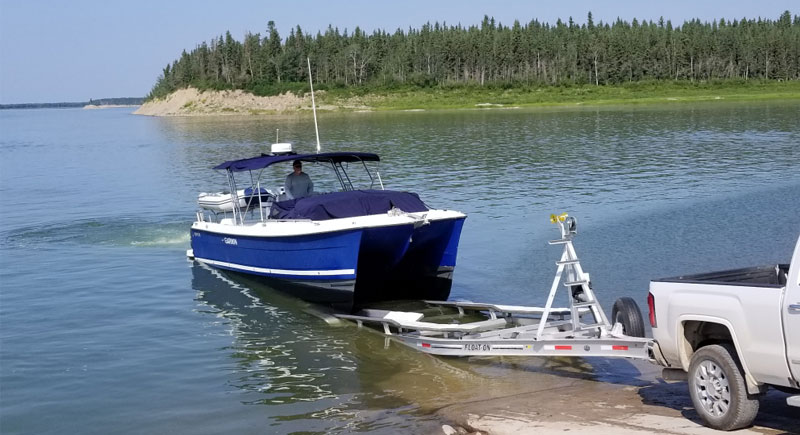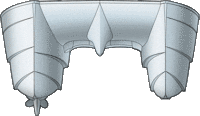The Advantages of Proa Hull Design
Setting out with the goal of building the most efficient boats we could, our founder Larry Graf and his designers sought to create earth-friendly cruisers that would inspire a new generation of boaters. And because Larry and his team played a hands-on role in developing some of the world’s best catamarans, they had an idea of what a boat could be in terms of comfort, stability, and fuel economy.
When one looks at catamarans vs. monohulls, the starting point is clear. The many advantages catamarans exhibit when compared with monohulls are an excellent starting point. Catamarans offer a stable ride with predictable hull movement. The seakeeping is excellent, even in rough conditions. Another advantage the design provides: incredible onboard space. The space of a catamaran is often comparable to that of a monohull that is 25 percent longer. Catamarans also have been proven to provide efficient operation.

A Different Kind of Catamaran
The concept was formed, and extensive testing was done to both prove and refine the design until the hull form we have today was established and then patented.
The first boats were single-engine diesels, with all propulsion confined to the larger starboard hull. This hull has the appendages including a keel, prop, and rudder. The hull forms are hydrodynamically designed so that power on one side creates straight tracking when the rudder is centered. If it were not for this, and rudder was needed to make the boat track straight, the constant rudder movement would create additional drag. The proa hull form works efficiently with both inboard and outboard power. Performance and stability remain unmatched whether powered by a single diesel or two gas outboards.
The shape of the tunnels from fore to aft is also precisely crafted. The forward section is designed to cut through wave tops, when in extreme conditions, creating a slight amount of lift as the vessel enters the wave with no slapping. The water funnels back into the tunnel flowing evenly and exiting at the stern. This tunnel design keeps water flowing and reduces wave impact much better than the tunnels of other catamarans.
The wider starboard hull provides more space for the accommodations, and also makes it easier to access and manage the engine and machinery. The proa hull on the portside is 35 percent narrower, but its actual drag is reduced by approximately 50 percent due to fluid dynamics. A hull that is a little thinner maintains the buoyancy required to keep the boat running true but requires a lot less energy to move through the water. This makes a big difference in efficiency.
Our patented proa design for inboards uses just one engine, one shaft, one prop, one rudder, and one keel—half the typical engine appendage drag of a twin-engine design. The hulls are shaped to compensate for the engine torque. Since both fluid-dynamic and engine-torque forces are proportional to speed, the boat runs straight at every speed. Even better, the single-engine design saves dramatically on machinery weight, which in turn, saves on the required structural-component sizes and fuel needs, and their corresponding weight. This reduces the boat’s weight by around 44 percent. Less weight also equals much less drag. Thanks to solid engineering principles and innovation, our boats strike the perfect balance for the environment: comfortable and efficient.


A second round of innovation was conducted on the outboard-powered boats. Originally the second engine was to allow for a trolling motor, but testing and further refinement led to the two-engine configuration. By thinking even further outside the box, we created an asymmetrical installation that has not been seen previously: one 200-horsepower Yamaha on the larger hull, matched to a 70-horsepower outboard on the smaller hull. With the option to run on both engines or on the single larger outboard, or even just on the smaller outboard, we are able to see the advantages in efficiency.
